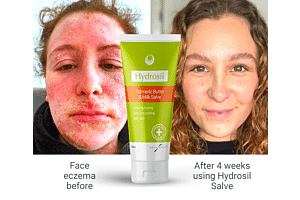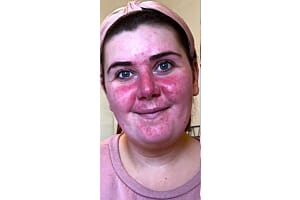What is Oregon Grape Root?
BY Bruce Shane 6 July, 2007
Oregon Grape Root is plant native to the west coast of North America and is also known by the names Mountain Grape, and Holly-Leaved Barberry (because it is a relative of the barberry plant). The species name Mahonia is named after Bernard McMahon, an American horticulturist. Mahonia is an evergreen and has prickly leaves, but the stems lack thorns.
The Oregon plant grows quickly, and reaches a height of six feet, producing yellowish-green flowers and purple berries. Both the rhizome and the root are used medicinally.
|
Oregon Grape Root
|
Oregon Grape has been used for hundreds of years to treat infections because of its powerful antibiotic properties and has been extensively examined as a treatment for skin conditions – namely psoriasis – as well as acne.
Psoriasis is a recurrent skin condition that affects around 2% of the UK population. It is caused by an acceleration of skin cell production. Normally a skin cell matures in 21-28 days. Psoriatic cells, however, turn over in 2-3 days and in such profusion that the live cells reach the surface and accumulate with the dead cells still in visible layers (hence the plaques).
The condition manifests itself as raised red patches of skin covered with silvery scales. It can occur on any part of the body although elbows, knees and the scalp are usual sites.
The studies on OGR and its effects on psoriasis have found that compounds isolated from extracts of OGR possess inhibitory activity against Lipoxygenase (an enzyme involved in psoriatic skin cell production).
At the cellular level, OGR has been shown to guard against accelerated activity during the process of keratinocytes (skin cell production).
OGR extracts were also shown in one pharmacological study to reduce inflammation (often associated with psoriasis), and to stimulate the white blood cells known as macrophages.
In addition to these studies a two-month trial, carried out by a UK doctor on 50 people, found that Skin Shop’s Orgeon Grape Root Daily Maintenance Cream improved psoriasis for 86% of the patients, with 75% of these experiencing a marked improvement after just four weeks.
In the UK study OGR also appeared to be more helpful than standard treatments for almost half the sufferers. Overall, 50% of participants had previously been treated with steroids or Dovonex and, of those, 95% said that after eight weeks OGR cream had improved all psoriasis symptoms (including itching, scaling, plaque thickness and redness) beyond the level of improvement already experienced on their existing steroid-based treatments.
In addition a recent Slovakian study stested the crude extract of OGR and its two main protoberberine alkaloids, berberine and jatrorrhizine, for its antimicrobial activity.
In the study 20 strains of acne bacteria were isolated from skin lesions of patients with a severe form of acne. The results of the study indicated that OGR extract was an effective treatment for localized bacterial skin infections and acne.
Another study published in the Journal of Dermatological Therapy found that: “oregon grape root had synergistic antibacterial, anti-inflammatory, and bile-stimulating properties which make the crude extract useful in the treatment of acne.”







